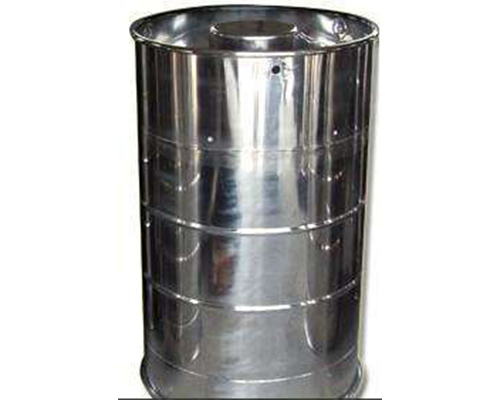Yingkou Hengyang New Energy Chemical Co., Ltd.
Address: Xianren Island Energy and Chemical Zone, Yingkou City, Liaoning Province, via the west side of the Fourth Road
Zip code:115200
Telephone:18241754999
Fax:0417-6775999
E-mail:1313264@qq.com
Website:en.yingkouhengyang.com
Diethyl carbonate has a variety of preparation methods, including phosgene method, blending and exchange method, carbonization method and so on. 3.1 Diethyl carbonate is prepared by phosgene and absolute ethanol. The reaction equation is as follows:
The industrial operation process is as follows: the phosgene is introduced into absolute ethanol, and the phosgene reacts with ethanol to form ethyl chloroformate, and releases hydrogen chloride gas. Ethyl chloroformate reacts with ethanol to form diethyl carbonate and further releases hydrogen chloride gas. The molar ratio of phosgene dosage to ethanol dosage is 1.05:1 to 1.10:1. The reaction temperature is 70-90 (?) C. After refluxing phosgene for 2 hours, the hydrogen chloride produced by the reaction can be absorbed by cooling to produce hydrochloric acid. The purity of industrial diethyl carbonate can reach more than 99%. The preparation of diethyl carbonate by phosgene requires more alcohols, longer reaction time, higher reaction temperature, and corrosive hydrogen chloride, which requires that the reaction equipment must be corrosion-resistant, which will inevitably lead to increased investment in equipment and thus increase production costs. More seriously, phosgene is used in the production of diethyl carbonate by phosgene method, and another highly toxic substance, ethyl chloroformate, is produced in the reaction process. Leakage in chemical production is always inevitable. If phosgene and ethyl chloroformate leak out, serious environmental pollution will occur. Previous advocates of green and clean production environmental protection requirements are inconsistent. Therefore, phosgene process should have strict safety assurance measures as well as corresponding environmental protection measures; furthermore, although hydrogen chloride released from the reaction can be absorbed into industrial hydrochloric acid for sale, it corrodes the equipment to varying degrees in the process of operation, so the requirements for the equipment are quite high. So phosgene method is a method with serious defects. 3.2 The transesterification process has many transesterification processes according to the different raw materials used. It mainly includes transesterification of diethyl sulfate and carbonate, transesterification of carbonate (propylene carbonate, vinyl carbonate, dimethyl carbonate, etc.) and alcohol.
173.2.1 Diethyl sulfate and diethyl carbonate sulfate can be transesterified with carbonate to form diethyl carbonate and sulfate. The suitable carbonates are potassium carbonate and sodium carbonate. The equation of reaction between diethyl sulfate and sodium carbonate is as follows: this reaction can be carried out directly without catalyst, but its defect is the use of highly toxic diethyl sulfate. In case of leakage, serious environmental pollution will occur, and solid sodium sulfate will be produced, which is easy to scale the reactor. This method has been basically not used at present. The equation for the preparation of diethyl carbonate by the reaction of dimethyl carbonate with dimethyl ethanol and dimethyl carbonate with ethanol is as follows: This is a parallel series reaction, the reaction is carried out in the presence of a positioner, and the reaction is carried out in two steps. First, diethyl carbonate and ethanol are reversibly reacted to form methyl ether carbonate and methanol, methyl carbonate. Ethyl ester reacts reversibly with ethanol to form diethyl carbonate and methanol. Diethyl carbonate with 99% purity can be obtained by distillation of the reaction product. This method uses non-toxic raw material dimethyl carbonate, does not produce pollution, and the reaction conditions are mild. It can react under atmospheric pressure. The reaction temperature does not exceed 80 C, and the requirement for equipment is not high, so it is easy to realize in industry. The reaction is a series reversible reaction, and there will be selectivity. Without any special measures, dimethyl carbonate can not be completely converted to Diethyl carbonate, and a large part of it will be converted to methyl ethyl carbonate, thus wasting raw materials and energy consumption. Appropriate engineering measures can be taken, that is, by reversing the reaction. The problems mentioned above should be solved by distillation. Reactive distillation is the combination of reaction and distillation in the same equipment, and the reaction and distillation are carried out simultaneously. The methanol produced by distillation and evaporation reaction changes the equilibrium state of the reaction, making the reaction proceed in the direction of producing diethyl carbonate, and improving the conversion of reactants and the selectivity of products. Reactive distillation also has the advantages of shortening reaction time, strengthening equipment production capacity and saving energy.
